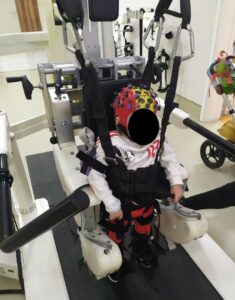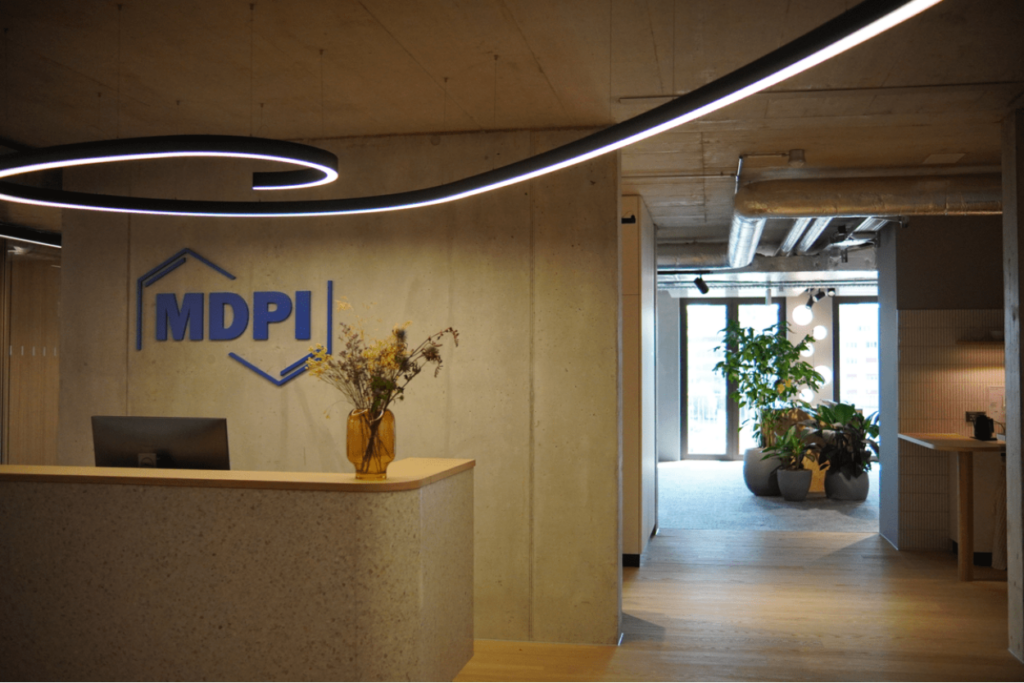Cerebral palsy (CP) is one of the common neurological conditions. Affects children at the early stages of nervous system development. CP causes various neurological problems. Some significantly impair mobility and motor control. Recently, the use of robotic-assisted guided training (RAGT) to improve motor function through forced movement has gained increasing attention. RAGT can easily activate neuronal patterns associated with motor activity. It accomplishes this, even if the ability to generate and control movement is severely limited, e.g. in the case of spinal cord injury.

Participant in the study during the recording of brain activity using fNIRS Cortivision Photon CAP
Therefore, RAGT appears to be a method that can be used in the early rehabilitation of children with CP. It benefit the plasticity of the developing brain through forced movement. To measure the effect of robotic-assisted guided training, it is possible to use, e.g. functional MRI. Still, due to the testing conditions (e.g., recording during real-time movements, low tolerance of children to being in an MRI scanner), functional near-infrared spectroscopy (fNIRS) seems to be a better suitable solution.
A group of researchers from several centres in Italy used the fNIRS Cortivision Photon CAP wireless headset to measure the effects of RAGT in children with SP, such as changes in functional cortical plasticity .
Scientists studied a group of 10. Children with CP who were subjected to intensive RAGT training (12 sessions of 30 minutes each, 3 times a week). Brain activity during movement and rest was measured. It was happening before the first (T0), after the sixth (T2) and after the 12th session (T2). Statistical analyses showed significant differences. It was between sessions in the activity of prefrontal and sensorimotor areas. More than that, machine learning (ML) algorithms revealed a relationship not only in the hemodynamic response activity recorded by fNIRS, but also improvements in motor function control as measured by the Gross Motor Function Measure-88 scale. According to the researchers, both results can translate into a better evaluation of the effects of personalized CP rehabilitation using fNIRS.
This study was part of the project “Can fNIRS predict the rehabilitation outcomes in response to robot-assisted gait training in children with cerebral palsy? ”supported by the Cortivision Pathfinder Program. Program participants will receive a fNIRS Cortivision Photon CAP and full assistance from Cortivision experts to realize their research projects.
The application call to Cortivision Pathfinder Program is continuous, so don’t wait and share your ideas with us!
The paper was published in a special issue of the Journal of Clinical Medicine “Biomarkers in the Clinical Diagnostic of Central Nervous System Diseases”.
You can find our publication in open access on the journal’s website.
Perpetuini D, Russo EF, Cardone D, Palmieri R, Filippini C, Tritto M, Pellicano F, De Santis GP, Calabrò RS, Merla A, Filoni S. Identification of Functional Cortical Plasticity in Children with Cerebral Palsy Associated to Robotic-Assisted Gait Training: An fNIRS Study. Journal of Clinical Medicine. 2022; 11(22):6790. https://doi.org/10.3390/jcm11226790
